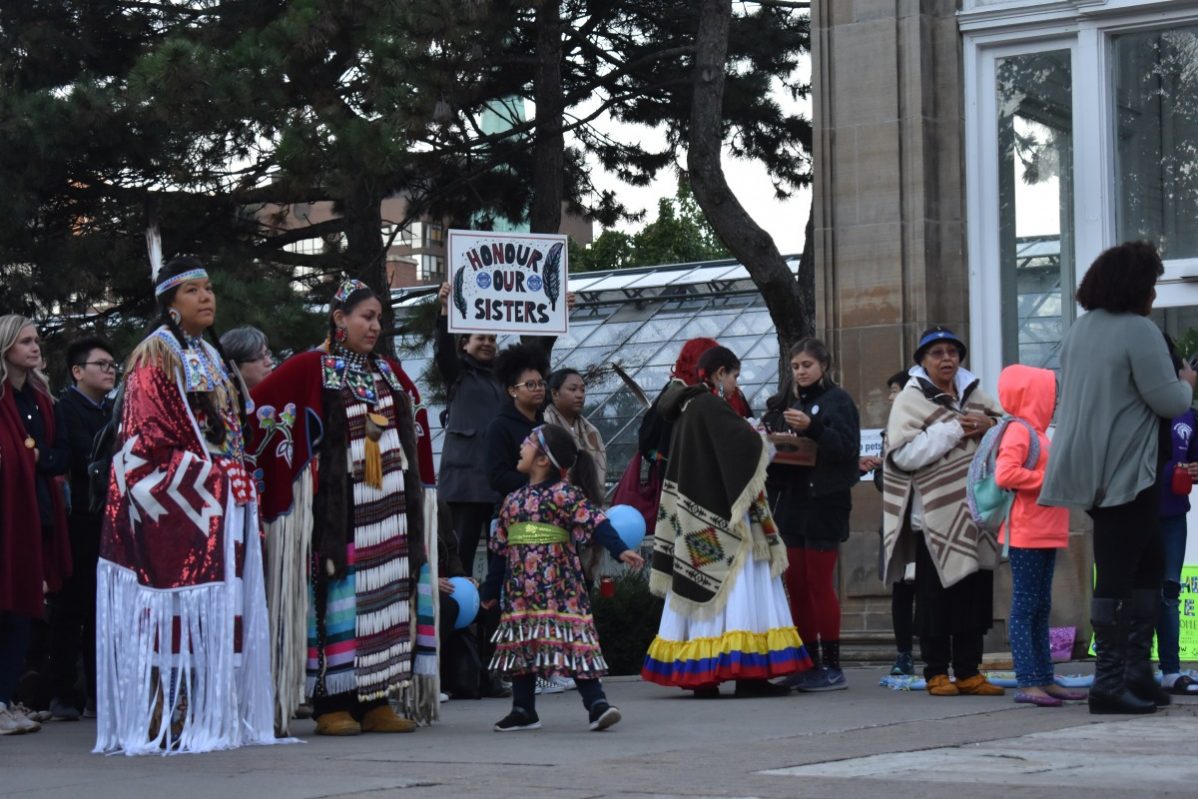Community remembers missing and murdered Indigenous women
On Oct. 4 the Native Women’s Resource Centre of Toronto (NWRCT) held a Sisters in Spirit vigil at the Allan Gardens, calling attention to issues affecting women belonging to Indigenous communities across Canada.
This is in keeping with the Missing and Murdered Indigenous Women and Girls (MMIWG) initiative which is considered a national crisis.
It particularly spoke to two-spirited and transgender women who have been more vulnerable to being targeted.
“It’s such a sad problem,” said Jenny Blackbird, who was the MC. “This continually needs to be done because sadly, some people don’t change and some people continue to perpetrate violence.”
While the event is raising awareness on this issue, Blackbird has said it pains the community that people need to be reminded of this constantly.
“It’s up to 3,000 women since the 1900’s, that have just gone missing or been murdered,” said Emily Clairoux, First Nations, Métis and Inuit Students’ representative for the Student Association of George Brown College (GBC).
The Truth and Reconciliation Commission (TRC) has filed a national inquiry to the Canadian government, advocating for more efforts to be placed into finding the MMIWG.
“Indigenous women are 12 times more likely to be murdered or missing than any other women in Canada,” Dr. Tracy Peter’s underlined in the national inquiry.
Organizers have had to push the Canadian government and police to respond and still find their efforts insufficient.
“They don’t care enough to even put out a serious investigation,” said Clairoux.
The Indigenous community has experienced much violence yet there are still many people living in Canada who are unaware of these incidents.
“We need to raise our voice and support the native people because after doing my course I realized what’s going on,” said Maureen Ernest, a GBC student in the assaulted women and children’s counsellor and advocate program.
The Sisters in Spirit vigil aims to provide healing for victims, family members and to anyone who has been affected.
Spiritual healing is a sacred tradition for Indigenous people that includes singing, dancing, drumming and prayers.
At the event, a sea of candles were lit around a circle in honour of the lives lost. As everyone gathered in front of the gardens, a march, led by dancers wearing jingle dresses, entered.
The jingle dress is an important part of these traditions, as “it’s a healing dress,” Blackbird explained.
A moment of silence was also observed in honour of the lives of the missing and murdered Indigenous women and girls.
At the end, a free dance circle took place. Slowly more people joined the circle until it was completely linked.
“We were asked to say ‘I love you’ and to hug each other. I really felt that’s how we, as humanity, are called to be together,” said Ernest.



